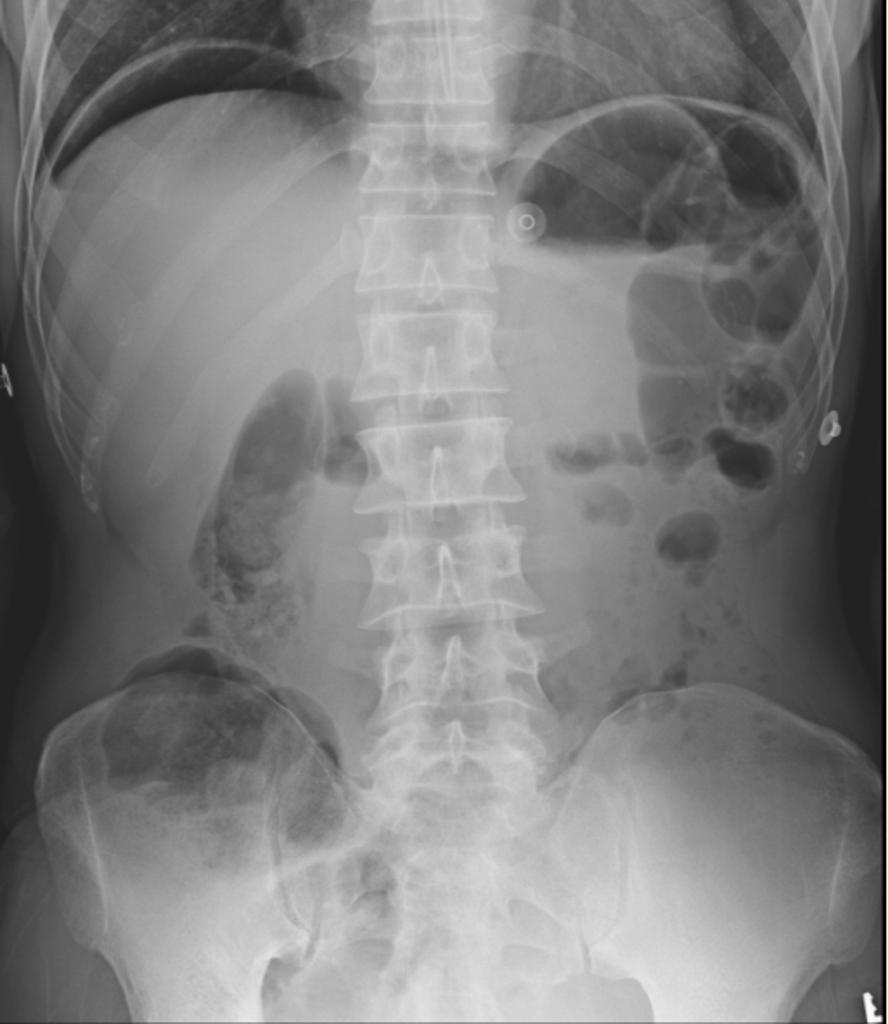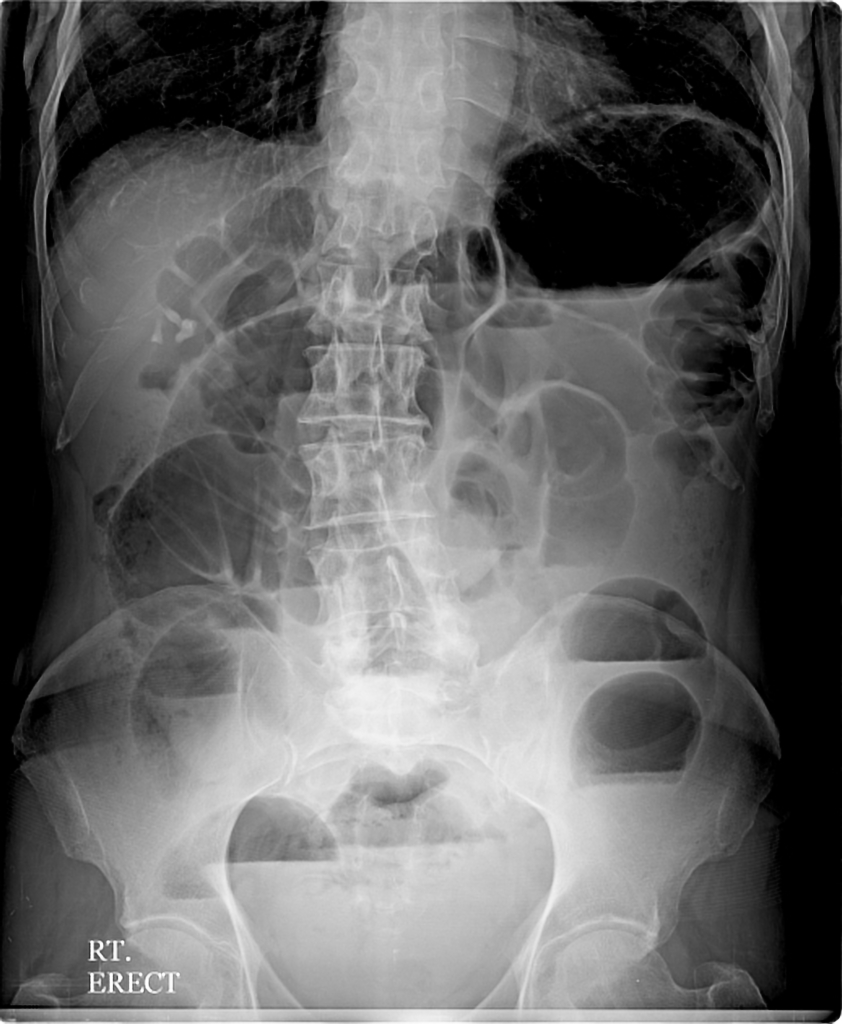Gastrointestinal perforation x-ray
Editor-In-Chief: C. Michael Gibson, M.S., M.D. [1]; Associate Editor(s)-in-Chief: Mohammed Abdelwahed M.D[2]
|
Gastrointestinal perforation Microchapters |
|
Differentiating gastrointestinal perforation from other diseases |
|---|
|
Diagnosis |
|
Treatment |
|
Case Studies |
|
Gastrointestinal perforation x-ray On the Web |
|
American Roentgen Ray Society Images of Gastrointestinal perforation x-ray |
|
Risk calculators and risk factors for Gastrointestinal perforation x-ray |
Overview
X-ray may be useful to diagnose gut perforation. Findings of chest x-ray in esophageal perforation include Pneumomediastinum, ring-around-the-artery sign in cases of pneumomediastinum, and widening of the mediastinum. Findings of abdominal x-ray in esophageal perforation include free gas under the diaphragm is a classic sign of pneumoperitoneum on erect chest, cupola sign is an arcuate lucency over the lower thoracic spine, and rigler sign is seen as gas outlines the inner and outer surfaces of the intestine. Signs of perforation on plain neck imaging include subcutaneous emphysema tracking into the neck, anterior displacement of the trachea, and air in the prevertebral fascial planes on lateral view.
Gastrointestinal perforation x-ray
Chest imaging
- Findings of chest x-ray in esophageal perforation include:[1]
- Pneumomediastinum
- Ring-around-the-artery sign in cases of pneumomediastinum: gas around pulmonary artery and main branches
- Widening of the mediastinum
- Free air under the diaphragm on upright films
- Pleural effusion
- Abnormal cardiomediastinal contour
Abdominal imaging
Findings of abdominal x-ray in esophageal perforation include:
- Free gas under the diaphragm is a classic sign of pneumoperitoneum on erect chest.
- Cupola sign is an arcuate lucency over the lower thoracic spine.[2]
- Rigler sign is seen as gas outlines the inner and outer surfaces of the intestine.
- Psoas sign is air in the retroperitoneal space outlining the psoas muscle.
- Urachus sign is air in the preperitoneal space outlining the urachus or umbilical ligaments.
Neck imaging
Signs of perforation on plain neck imaging include:[3]
- Subcutaneous emphysema tracking into the neck
- Anterior displacement of the trachea
- Air in the prevertebral fascial planes on lateral view


References
- ↑ Sinha R (2007). "Naclerio's V sign". Radiology. 245 (1): 296–7. doi:10.1148/radiol.2451042197. PMID 17885199.
- ↑ Marshall GB (2006). "The cupola sign". Radiology. 241 (2): 623–4. doi:10.1148/radiol.2412040700. PMID 17057080.
- ↑ Kim SH, Shin SS, Jeong YY, Heo SH, Kim JW, Kang HK (2009). "Gastrointestinal tract perforation: MDCT findings according to the perforation sites". Korean J Radiol. 10 (1): 63–70. doi:10.3348/kjr.2009.10.1.63. PMC 2647165. PMID 19182505.